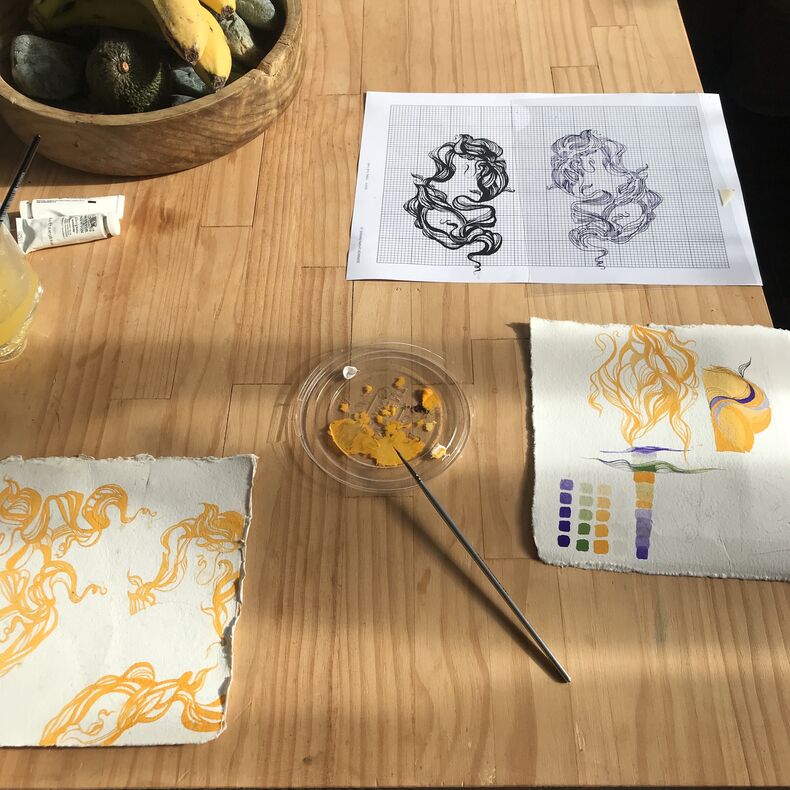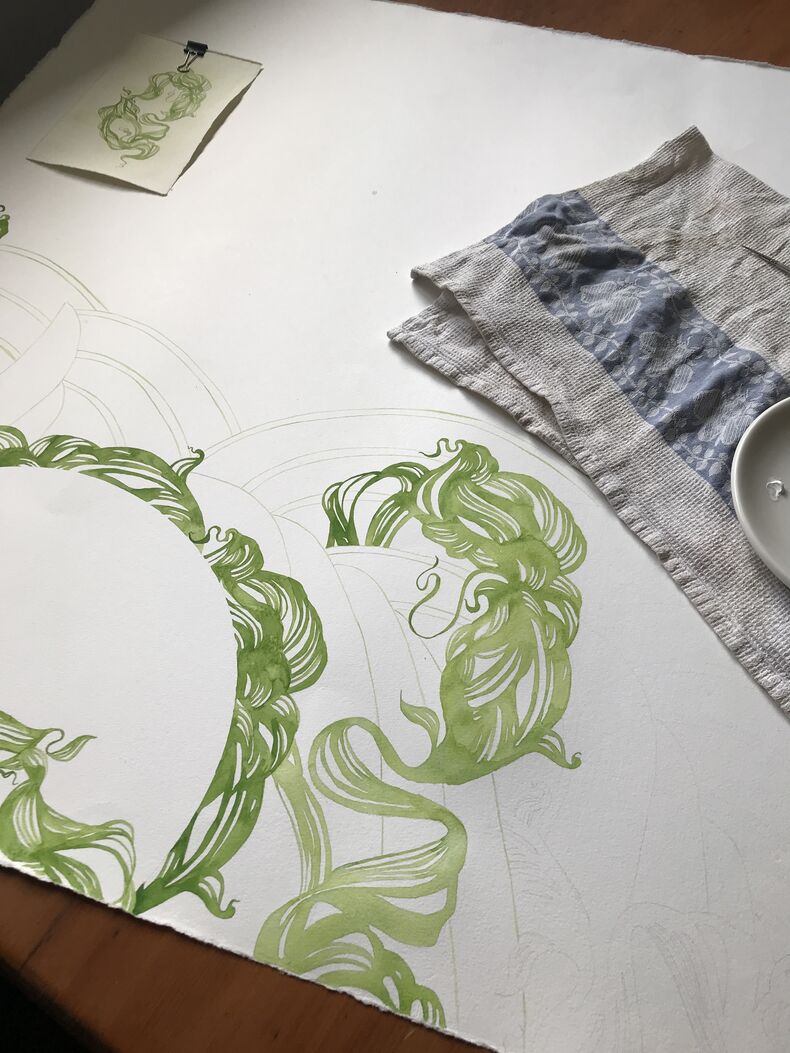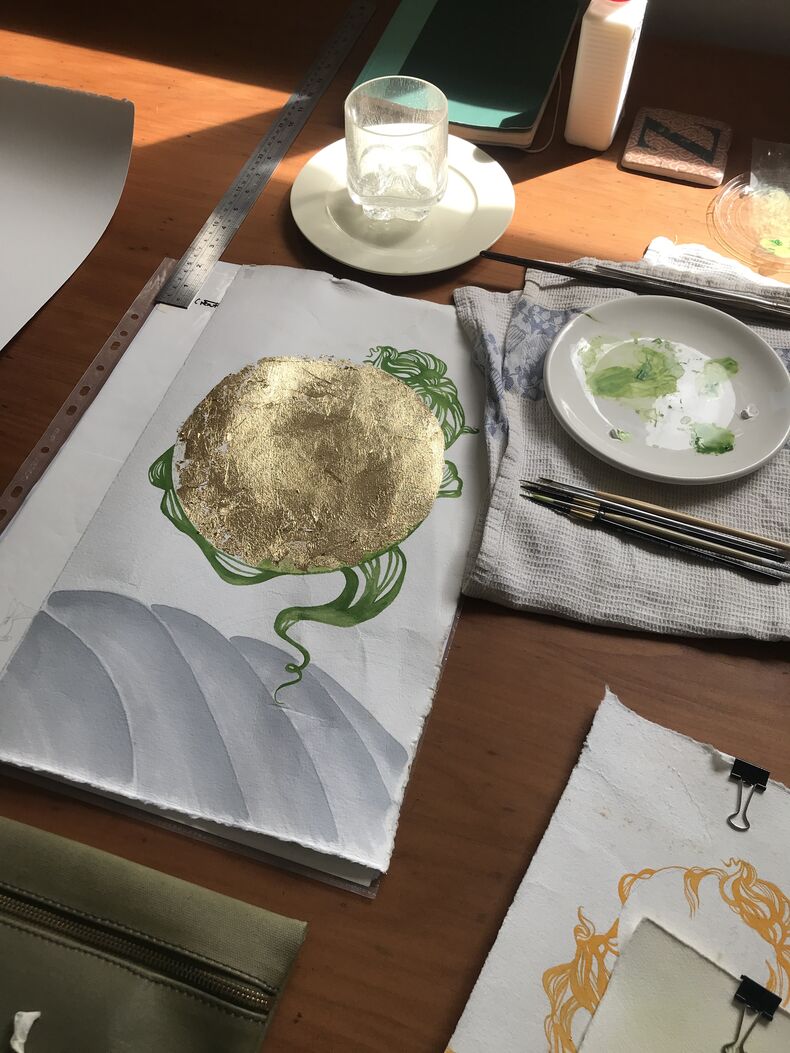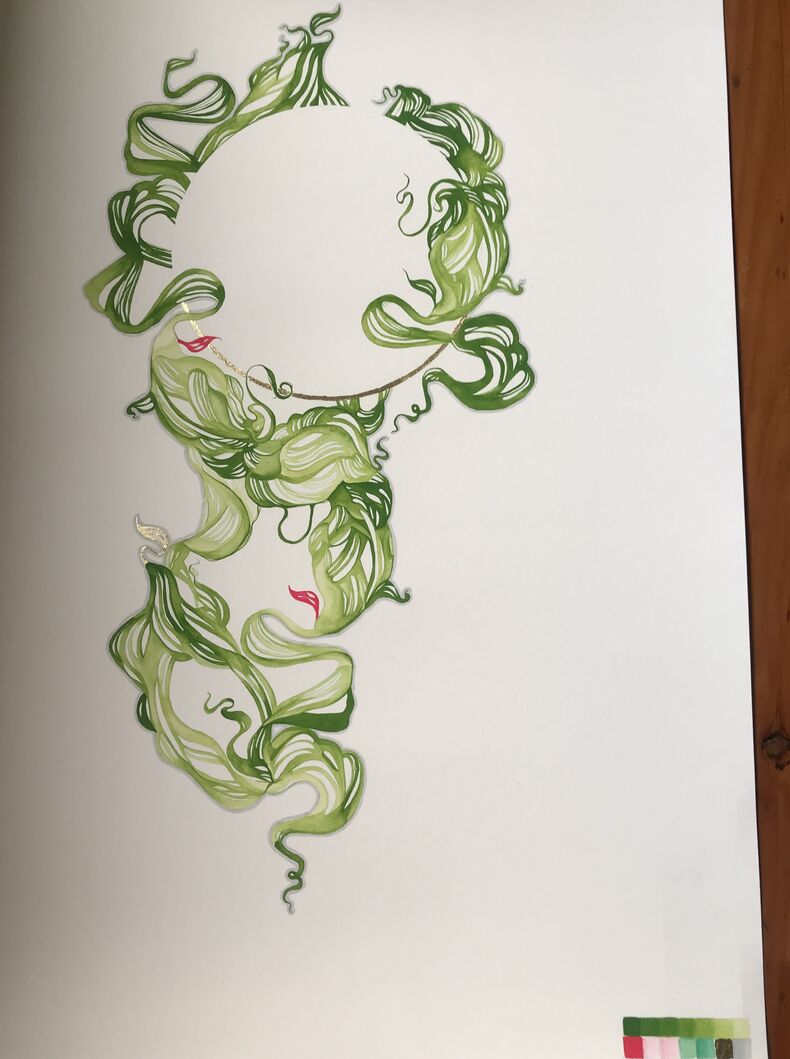For a lot of us, making things requires a certain headspace. Some relish under the pressure of deadlines while others prefer to set aside creativity as a form of relaxation and escape.
Making can be particularly hard in times of restriction as our daily lives become increasingly repetitive and recluse.
As Tāmaki Makaurau enters its 8th week of lockdown, Demelza and I reflect on our making patterns, or lack thereof, in these uncertain times.

My pal Demelza, the wonderful mind behind Project Make, has been in somewhat of a creative slump over the past few weeks. It wasn’t until recently when she shed the pressure of making something ‘perfect’, that she began to explore the exciting outcomes of working with an old loved medium. With gouache as her weapon of choice, Demelza embraced the water-based medium, creating a series of delightfully tangled experimental works.

Using our Digital Handmade Project and its resources as a starting point, Demelza followed the format of testing before making. Repeating this process to see what worked and what didn’t. The knack of embracing, what Demelza dubs the “gross stuff”, to get to the “cooler stuff” takes practice and trust in your abilities. She did set one boundary, no digitising, to combat some major working-from-home screen fatigue. It is this type of responsive and expressive making that consoles us during unsettled times. In ignoring the pressure of needing to produce a resolved final work on the first go, a new type of creativity is unlocked. One which is not tied to linear methods of making, but reliant on experimentation and uncertainty.

Demelza will continue her ‘no strings attached’ making, welcoming trial and error and ultimately trying to enjoy the process.
As makers, following our creative urges might help us to establish new styles or approaches we may have never considered.
For example, I’ve gotten into paper-mâché over lockdown, a medium I haven’t touched since high school but have found it equal parts inspiring and calming. In these times we must remind ourselves that making isn’t always familiar or linear and sometimes the best ideas are a bit strange and tangled.
